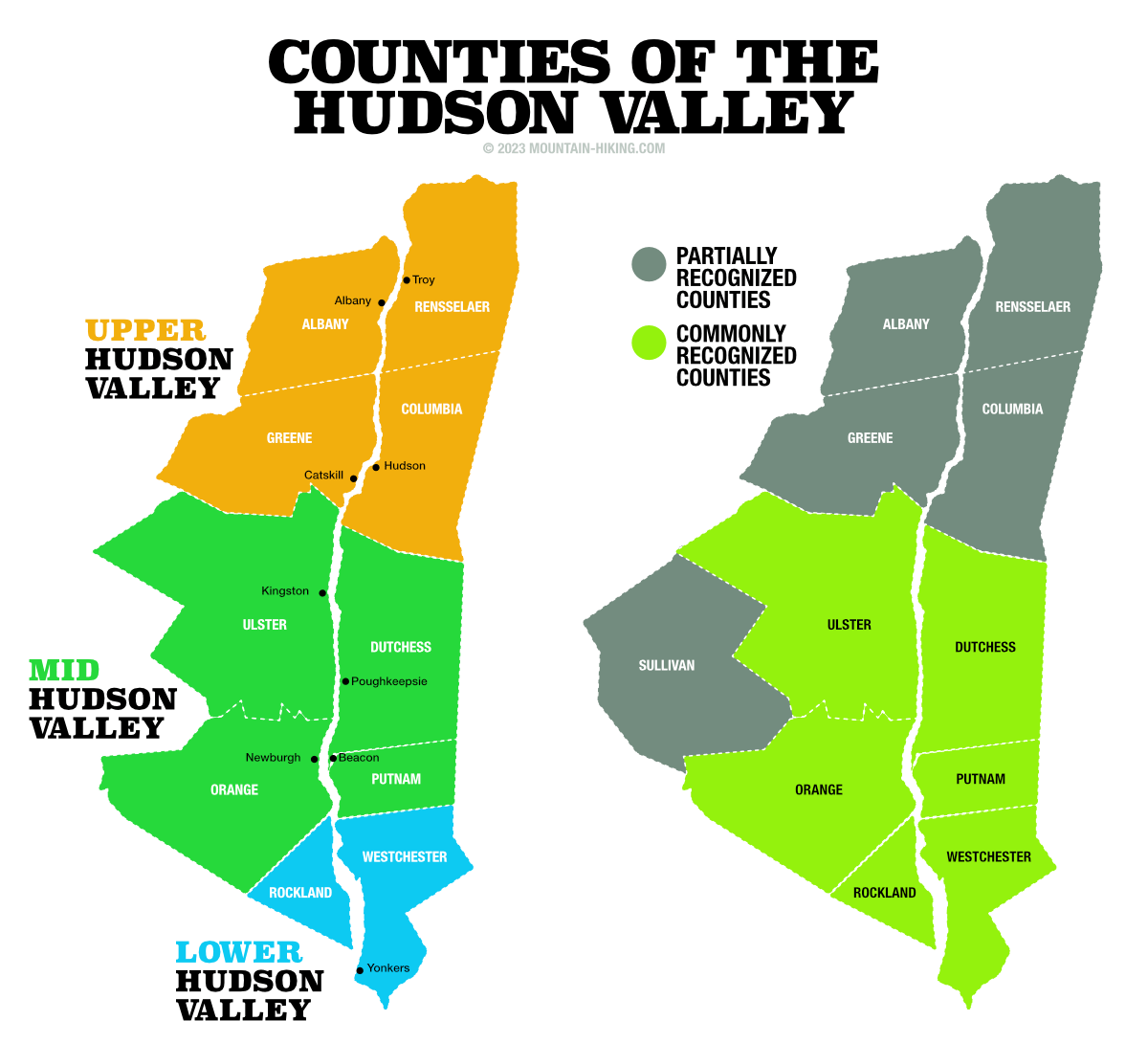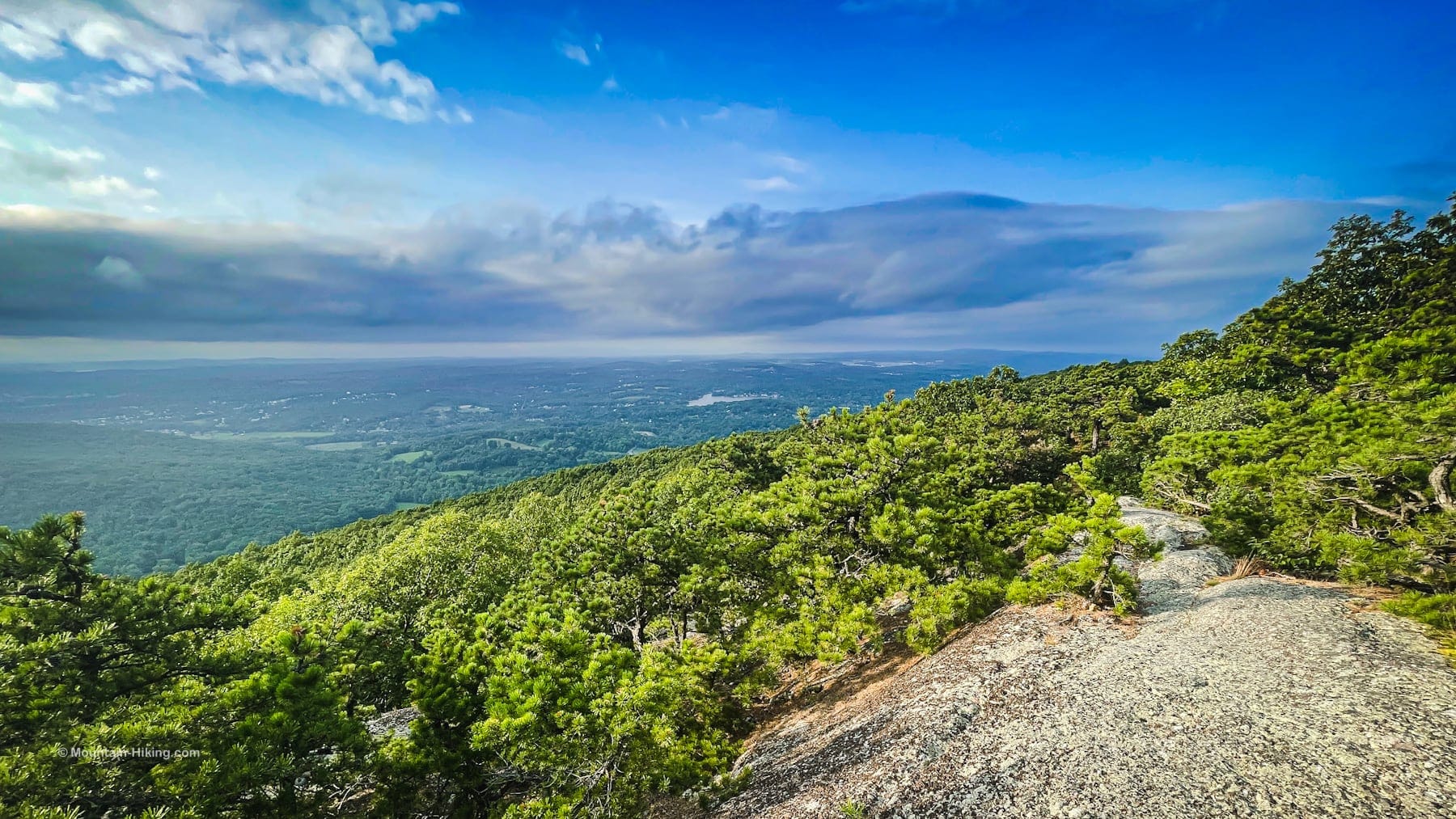Disclosure: This content may contain affiliate links. Read my disclosure policy.
What is considered the Hudson Valley is a hill no human should be prepared to die on, but here we are.
Surprising to some, there are actually 10 counties that make up the Hudson Valley region. Although these ten counties are legally defined to constitute the Hudson River Valley National Heritage Area, some people remain surprised to find that Albany and Rensselaer counties are included, and Sullivan County is excluded.
The Hudson Valley
Historically, the Hudson Valley was witness to the birth of a fledgling nation as the site of pivotal Revolutionary War battles. For almost 200 years, the region’s scenic beauty and proximity to New York City have attracted luminaries of art and literature, from Washington Irving to the Hudson River School painters, who immortalized its landscapes.
Economically, the Hudson Valley has long been a powerhouse. Its fertile soil fostered a robust agricultural industry in the 18th and 19th centuries, while the river’s waters facilitated trade and industry. The Industrial Revolution found a home here, with factories and mills sprouting along its banks. Today, the Hudson Valley remains a hub of economic activity, with thriving sectors ranging from technology and healthcare to agriculture—and, of course, tourism.
Counties of the Hudson Valley
- Westchester County (Pop. 1.0 million)
- Dutchess County (Pop. 300,000)
- Ulster County (Pop. 180,000)
- Putnam County (Pop. 100,000)
- Rockland County (Pop. 320,000)
- Orange County (Pop. 370,000)
- Greene County (Pop. 49,000)
- Columbia County (Pop. 63,000)
- Rensselaer County (Pop. 160,000)
- Albany County (Pop. 300,000)
In fairness, many of us reflexively think of the Hudson Valley as consisting only of 6 core counties: Rockland, Westchester, Orange, Putnam, Ulster, and Dutchess. It has long been that way and, despite change being the only constant, we are hesitant to change ideas we’ve grown accustomed to.
Get access to hyper-detailed trail guides, insider tips, and expert advice. Join a vibrant community of like-minded hikers, receive exclusive content, and embark on unforgettable outdoor adventures. Whether you’re a seasoned outdoor enthusiast or just starting out on your hiking journey, this website provides invaluable resources to help you explore the best trails in the Catskills, Adirondacks, Hudson Highlands, Berkshires, and beyond. Get access now to all content on this website instantly and enjoy unique supporter benefits.
Some people include Sullivan County, a key component of The Catskills region, because it makes a lot of sense.
The Hudson Valley, and how it’s seen, breaks down like this…

So, What is Considered The Hudson Valley?
Here are two ways of defining what constitutes the Hudson Valley region…
The Legal Region
The National Park Service includes all 10 counties listed above.
And the Hudson River Valley National Heritage Area website explains that… The Hudson River Valley National Heritage Area was designated by Congress in 1996 and is one of the now 62 federally-recognized National Heritage Areas throughout the United States. In March 2019, the Hudson River Valley National Heritage Area was officially renamed the Maurice D. Hinchey Hudson River Valley National Heritage Area, in honor of the late Congressman who wrote the legislation creating the area in 1996.
And even if you just Google “counties of the Hudson valley” you’ll be presented with a list of all 10 counties.
Albany County, though? Isn’t that the definition of The Capital Region? Considering how hot the Hudson Valley region has become, it makes sense to include more counties in its definition. So Albany is in. (It’s good for business.)
But did you know that Greene County is considered part of the Capital Region? The fact is: the Hudson Valley and The Capital Region overlap.
The Geographic Region
My personal vision of the Hudson Valley is not defined by human-made administrative jurisdictions that reference French counts. (The term “county” is comes from the Old French comté denoting a jurisdiction under the sovereignty of a count or a viscount [WikiPedia].)
As a hiker who loves terrain, IMO, the Hudson Valley is simply any land adjacent to the Hudson River. This includes, in my mind, the upper stretches of the valley that reach deep into the western Adirondacks.
But even the Hudson River itself is an administrative concept. As named, the Hudson River begins at eastern outlet of Henderson Lake in the Adirondacks — but the river’s headwaters can be traced to the tarn of Lake Tear of the Clouds which is several miles further upstream, in the col between Mount Marcy and Mount Skylight.
BTW, you might also enjoy…
- ADK › Whiteface Mountain via Marble Mountain
- DANGER › 6 Feet Under? How Our Adirondack Hike Turned Deadly Serious (Substack)
- ADK › Hurricane Mountain Fire Tower
- CATSKILLS › Catskills Fire Tower Challenge 2025
- Follow › My Instagram @TotalCatskills
- Follow › My writing for Times Union
Conclusion
All of this points to the lack of vision we westerners so often suffer from. We think in terms of jurisdictions and property boundaries, and have done so our whole lives. We rarely decouple the layers of received bureaucracy from the physical environment around us. In fact, we experience our world as a series of boundaries and labels.
The theme of legal jurisdictions runs deep in our brains, as if land can somehow be separated from itself, as if the activities we carry out on our administrative parcels somehow do not affect the administrative parcels downstream; those effects someone else’s problem.
So I define the Hudson Valley more in terms of its geography than its administrative labels.
Whether you’re exploring the heart of the Hudson Valley or wandering into its outlying counties, remember that the Hudson Valley is more than a place—it’s an ever-evolving concept, a reflection of the enduring relationship between people and the land.
Read More
Get full access…
Get instant access to the full version of this site and enjoy great supporter benefits: full galleries, full trail notes, early access to the latest content, and more.
Hot on the website right now…
Follow for more…
Follow my @TotalCatskills content on Instagram for regular hiking inspo and safe, inclusive community.

